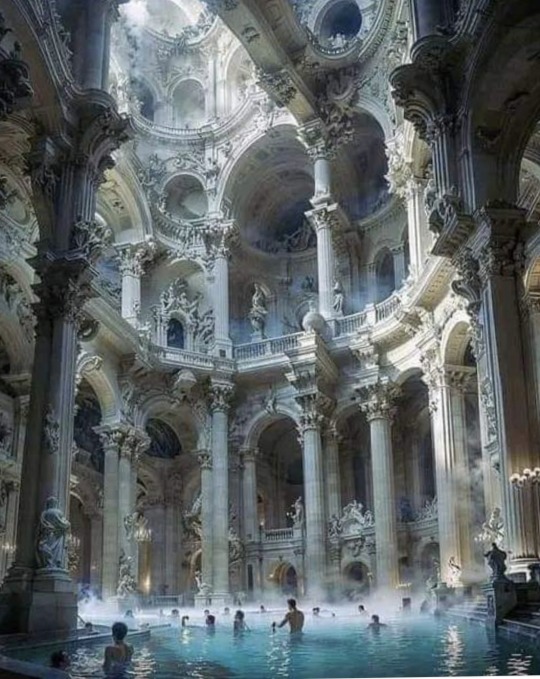#baths of caracalla
Text

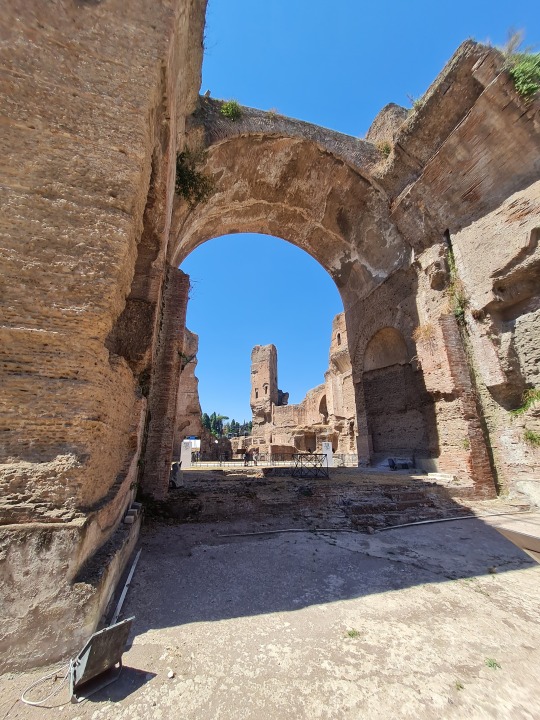

The Baths of Caracalla in Rome, Italy
The Baths were unprecedented in size: 1600 Romans could bathe at the same time. Apart from the bathing facilities, there were two libraries and there were shops, offices, gardens and even an area for sport. It simply didn't fit inside of Rome, and that is why it was built just outside of it, by the Appian Way (Via Appia).
#baths of caracalla#ancient rome#ancient history#ancientmonuments#roman empire#roman emperor#rome#italy#italia#roman architecture#architecture#architettura#ruins#history#culture#archaeology#roman archaeology#roman history#mosaic#roman mosaic#travel#traveling#travel photography#photography#wanderlust#vacation#travel tips#travel destinations#explore#.5k
956 notes
·
View notes
Text
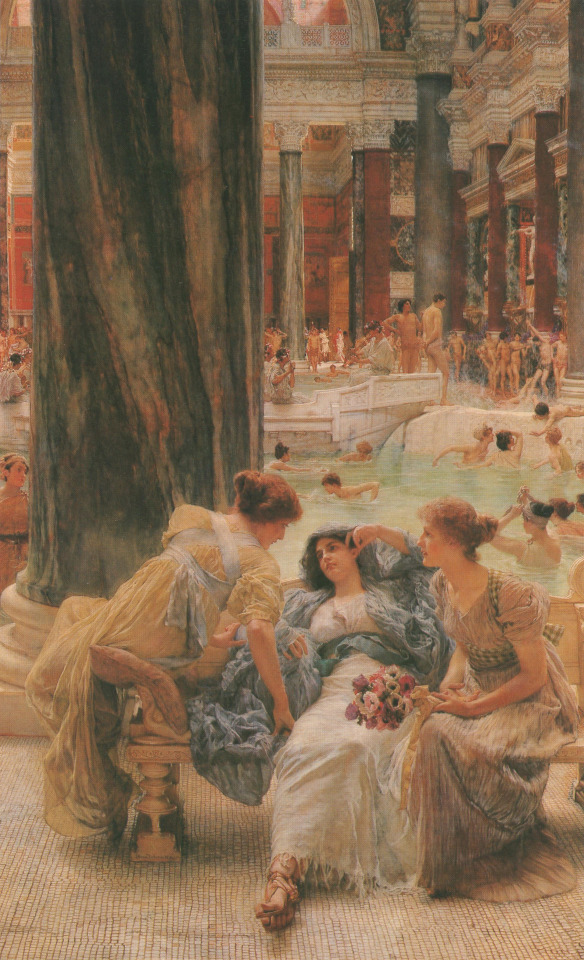
Sir Lawrence Alma-Tadema (Dutch-British, 1836-1912)
Baths of Caracalla, 1889
#Sir Lawrence Alma-Tadema#Sir Lawrence Alma Tadema#Lawrence Alma Tadema#Lawrence Alma-Tadema#art#fine art#classical art#european art#europe#european#oil painting#fine arts#europa#mediterranean#cradle of civilization#roman bath#baths of caracalla#southern europe#island kingdom#england#dutch#dutch art#british#british art#bathers#baths of caracalla 1889
222 notes
·
View notes
Text
Photography of the Day - Seagull
A seagull flying over the Baths of Caracalla, in Rome.
Seagull – Photo by Raffaello Palandri

View On WordPress
#Baths of Caracalla#black and white#black and white photography#Italia#Italy#photo#photo of the Day#photography#Photography of the day#POTD#Roma#Rome#seagull#Terme di Caracalla#travel#travel photography
26 notes
·
View notes
Text

Rovine delle Terme di Caracalla, Roma, 2019,
#ruins#roman empire#baths#baths of caracalla#roma#lazio#italia#2019#photographers on tumblr#black and white
21 notes
·
View notes
Text

Today's Flickr photo with the most hits: taken at the Baths of Caracalla - Third Paradise, by PISTOLETTO.
0 notes
Text
youtube
#Rome#Roman#City#Town#Urban#Ancient#Poemerium#Colony#Military#Legion#Military Camp#Forum#Thermae#Baths#Baths of Caracalla#Baths of Diocletian#Aqueduct#Cloaca Maxima#Sewer#Roman Toilets#Toilet#Amphitheatre#Amphitheater#Colosseum#Circus#Circus Maximus#Chariot#Gladiator#Stadium#Basilica
0 notes
Text

The Baths of Caracalla by Lawrence Alma-Tadema
#lawrence alma tadema#art#baths#caracalla#roman#ancient rome#rome#romans#ancient#antiquity#history#europe#european#architecture#architectural#bathing#women#dresses#flowers#public baths#thermae#italy#baths of caracalla
201 notes
·
View notes
Text

A portion of a mosaic floor depicting the head of a boxer, from the exedra of the palaestrae of the baths of Caracalla, ca. AD 200, National Museum of Rome / [***]
5 notes
·
View notes
Text

Ruins of the 3rd-century Roman Baths of Caracalla, Rome, Italy
Italian vintage postcard
#italian#historic#photo#briefkaart#vintage#caracalla#rd#rome#baths#sepia#photography#carte postale#italy#postcard#postkarte#postal#tarjeta#ansichtskarte#old#ephemera#ruins#postkaart#roman#century#3rd-century
11 notes
·
View notes
Text
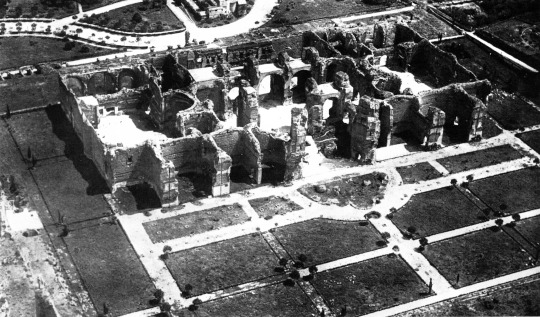
The Baths at Caracalla, Rome, Italy, c. 211-17 A.D.
31 notes
·
View notes
Text
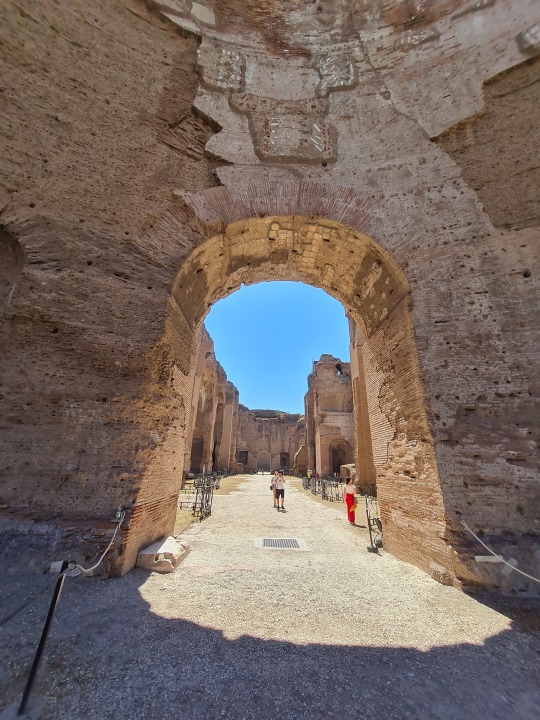


The Baths of Caracalla in Rome, Italy
The thermae were probably constructed during the reigns of the emperors Septimius Severus and his son Caracalla. This was between 211 and 216/217 AD.
#baths of caracalla#ancient rome#roman history#ancient history#ancientmonuments#archaeology#roman empire#caracalla#roman emperor#bath house#roman architecture#rome#roma#italia#italy#rome italy#travel#traveling#travel photography#history#culture#architecture#mosaic#roman mosaic#travel blog#wanderlust#explore#road trip#lazio#original photography
243 notes
·
View notes
Text
Before the construction of the Baths of Caracalla in Rome, there once existed a private home decorated with stunning frescoes. Now, these frescoes have been restored and are finally on public display.
44 notes
·
View notes
Text
Explaining One of VTMB Paintings (part 15)
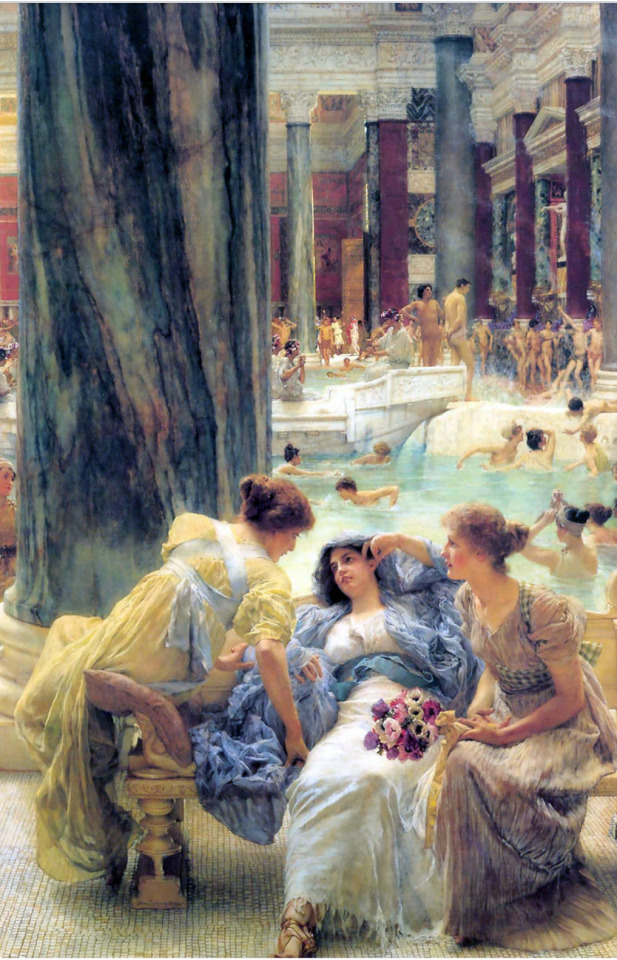
The Baths of Caracalla, oil on canvas (1899) by Sir Lawrence Alma-Tadema
Sir Lawrence Alma-Tadema(Jan 8 1836- Jun 25 1912) was a Dutch painter born in Dronryp , Netherlands and later became a UK denizen(an old legal status were you were able to own land and like in the UK without being a Citizen but still enjoying most of the rights). His art styles include both Romanticism (which this painting is) and Neoclassical.Before 1860s many of his works were of Merovingian subjects(Merovingian Dynasty was a Frankish(Germanic people who lived in what’s now part of Modern day France) ruling family in power from the mid 5th century to 751). His painting The Clotilde and the Tomb of her Grandchildren [1859 ](see below) is an example of Merovingian subject matter in a NeoClassical style. Despite his foundness Merovingian subject was not very popular on the international art market so he switched to painting focused on more popular subjects to depict in his artwork mostly focused on as historic/ ancient Egyptian, Roman and Greek subjects and events.

The Clotilde and the Tomb of her Grandchildren, oil on canvas (1858) by Sir Lawrence Alma-Tadema
Romantic art focused on emotions, feelings, and moods of all kinds including spirituality, imagination, mystery, and fervor. The subject matter varied widely including landscapes, religion, revolution, and peaceful beauty. The brushwork for romantic art became looser and less precise. The great Romantic artist Caspar David Friedrich summed up Romanticism saying "the artist's feeling is his law".
The Baths of Caracalla is a real Roman public bath built in Rome, Italy (the second largest in the city) sometime between 212 AD and 217 AD and was in operation until around 537 AD when it fell into disuse. The paining shows the historical imagination of what the baths would have looked like during the height of its popularity as it would be a major social space public space.
Historically Roman public baths acted as community centers where free and included access to a wide verity of atonal features such as gymnasiums for men to exercise; statues, murals and other public works of art; restaurants to buy multiple types of food and even a library that allowed everyday Roman citizens access to literature works they wouldn’t be able to offers to buy. Roman Public baths acted as not only bath houses but as a Library, gym, spa, restaurant and public art gallery. The waters of the baths were heated by a hypocaust, a heating system where coal and wood is burned under the ground.

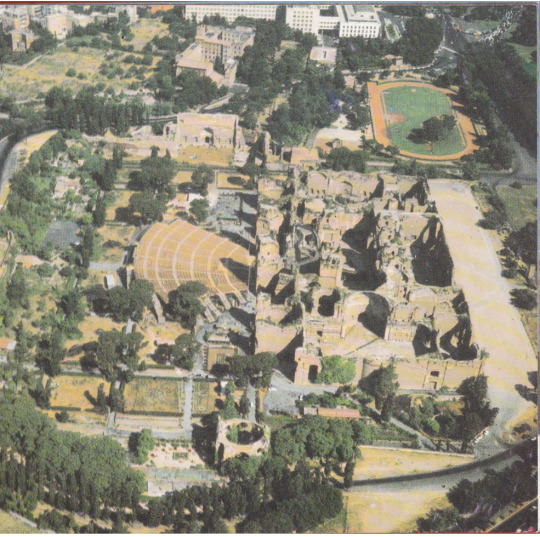
The baths were most likely built by emperor Septimius Severus (part of the Severan Family) as they are located in the southern part of Rome where during that time members of Severan family were known to commission a number of public works in that specific area of the city for political favor. The site the baths were built on where originally part of a Garden estate known as horti Asiniani by Gaius Asiniani Pollio during the reign of Augustus( first emperor of Rome 63 BC to 14 AD, so about 200 to 260 years before the construction of the baths). The Garden was home to a number of sculptures such as the Farnese Bull which were kept as part of the public art displays of the baths when they were in use. During the height of its popularity the baths are estimated to have a daily capacity of 6,000 to 8,000 visitors a day.

Farnese Bull, marble sculpture (2nd century BC) by Apollonius of Tralles
Even after falling into ruin the Caracalla baths still found use as in the 14th century a Christian pilgrim site was set up near by due to the proximity to the Church of Saint Nereo e Achilleo( built facing the baths in the 4th century) and was used by the pilgrims as their main water source. But in 537 AD during the war of the Gothic war the city’s water supply was cut by Vitiges of the Ostrogoths and the baths were once again abandoned.

During the 6th and 7th century the baths were still in the very sparely populated area of Rome and were used to burry pilgrims who died in the xenodochium ( hospital specifically for treatment of foreign pilgrims) of the Church of Saint Nereo e Achilleo. Then starting in the 12 century the baths were used as a quarry for stone and decorative masonry that were often used in the construction of churches. In the 15th century Pope Pius II used stone from the baths in the construction of the Loggia of the Benediction (fancy decorative balcony used by the Pope) at St Peters Basilica, Vatican City. (See photo below)
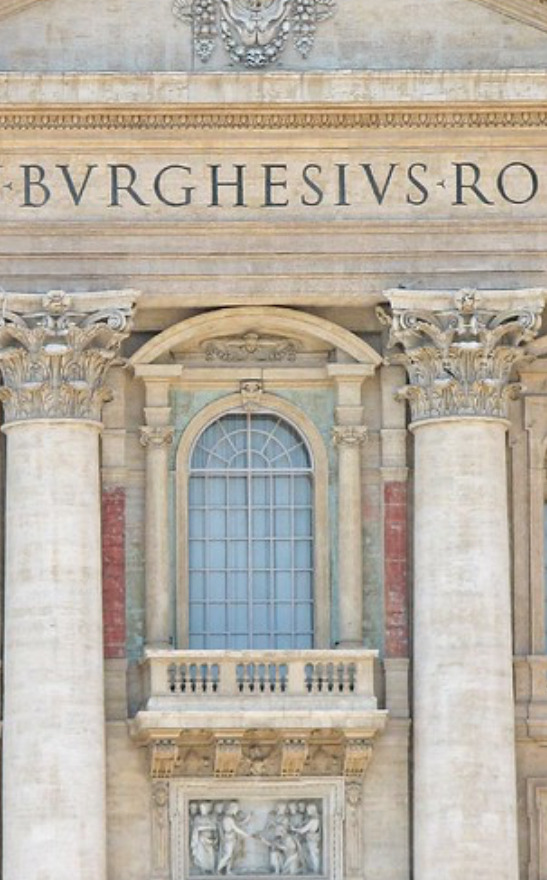
it wasn’t until the 16th and 18th century when interest in restoring the Baths as a historic site began. With the excavation of the baths beginning in 1824 by Count Egidio di Velo.
The Baths of Caracalla have been a popular subject of a number of different art works over the years by a wide number of artist who ether are depicting historical scenes of artist imaginations of the baths in its prime or capturing architectural beauty that remained even after it fell into ruin. (see examples below)

Baths of Caracalla Rome: interior of the Tepidarium, watercolor (1845) C.R. Cockerell and assistant Jackson used in lecture of architecture. Image based on illustration based of detailed restoration done on the baths found in a book published by French architect G.A Blouet in 1828.

Interior of the Baths of Caracalla, print if etching with watercolor and gouache(circa 1780) by Swis painter and engraver Abraham-Louis-Rodolphe Ducros.
#vampire the masquerade bloodlines#VTMB#explaining one of vtmb paintings#art history#romanticism#The baths of Caracalla#Ancient Roman#Sir Lawrence Alma-Tadema
1 note
·
View note
Text
Rome: Something Different to Explore.
When people think of Rome as a place to visit for a couple of days, it's usually the same journey as trodden by millions of other tourists before them.
Rick Steves has put a whole new slant on it.
It's time to see something different from the norm.
Discover the history of Ancient Caracalla and Thermae Antoninianae.
Read on...
#travel#archaeology#Thermae Antoninianae#caracalla history#roman baths#travel destinations#europe#rome
0 notes
